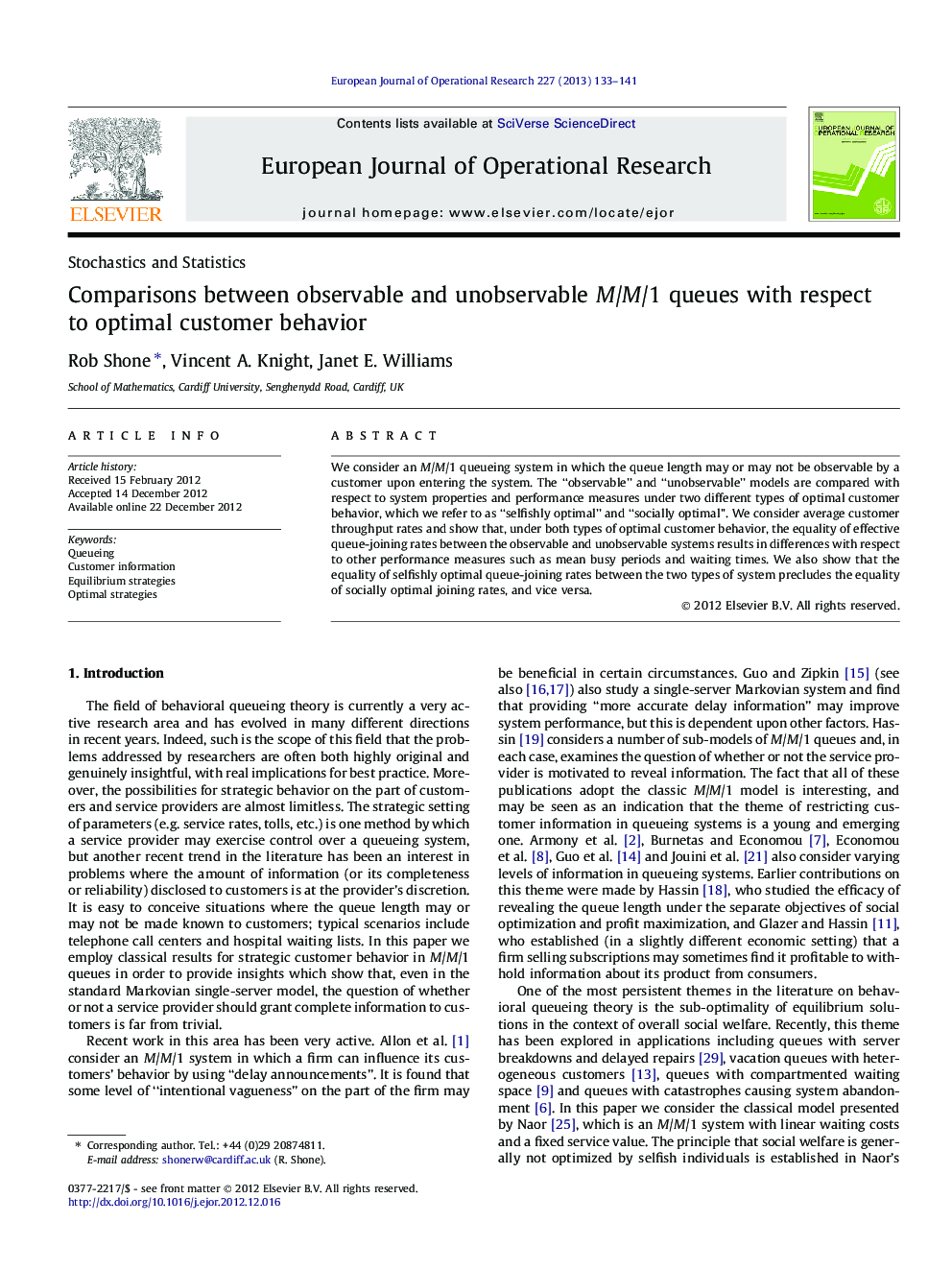| Article ID | Journal | Published Year | Pages | File Type |
|---|---|---|---|---|
| 476793 | European Journal of Operational Research | 2013 | 9 Pages |
We consider an M/M/1 queueing system in which the queue length may or may not be observable by a customer upon entering the system. The “observable” and “unobservable” models are compared with respect to system properties and performance measures under two different types of optimal customer behavior, which we refer to as “selfishly optimal” and “socially optimal”. We consider average customer throughput rates and show that, under both types of optimal customer behavior, the equality of effective queue-joining rates between the observable and unobservable systems results in differences with respect to other performance measures such as mean busy periods and waiting times. We also show that the equality of selfishly optimal queue-joining rates between the two types of system precludes the equality of socially optimal joining rates, and vice versa.
► We compare observable and unobservable M/M/1 queues with respect to optimal customer behavior. ► Conditions for the equality of optimal queue-joining rates are established. ► Performance measure comparisons are presented under the equality of queue-joining rates.
